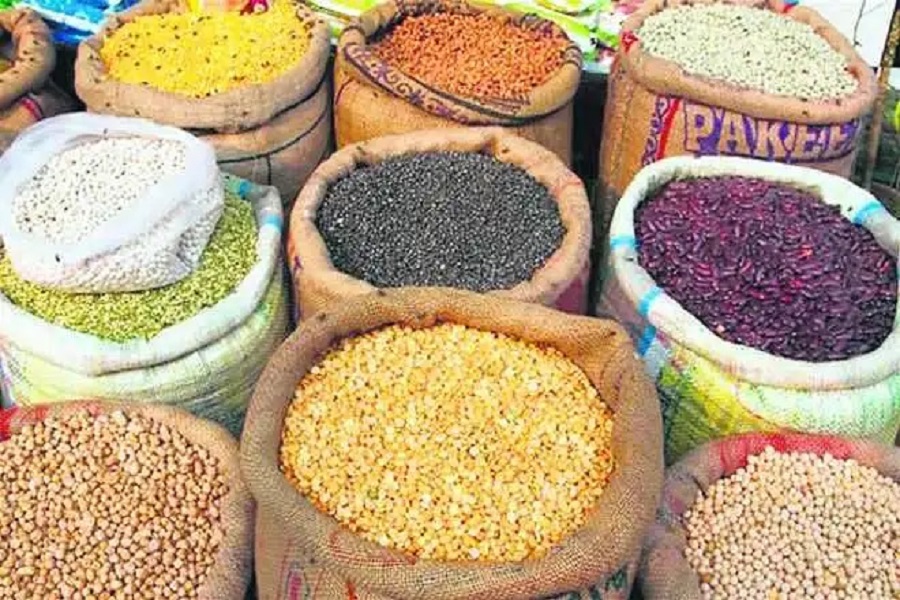
The Centre, during the 2023-24 rabi season, has procured 6.41 lakh metric tonnes of pulses at an MSP value of Rs 4,820 crore which has benefited 2.75 lakh farmers, according to a statement issued by the Ministry of Agriculture & Farmers Welfare on Wednesday.
The procurement to support the farmers included 2.49 lakh metric tonnes (LMT) of masoor, 43,000 MT of chana, and 3.48 LMT of moong.
Similarly, 12.19 LMT of oilseeds of Rs 6,900 crore of MSP value were procured from 5.29 lakh farmers. During the start of the ongoing Kharif season, market prices of soyabean were ruling much below MSP prices, leading to great hardship to farmers. With the intervention of the Centre under the PSS scheme (a component of PM AASHA), 5.62 lakh LMT of soyabean has been procured at an MSP value of Rs 2,700 crore, as of December 11 this year which has benefited 2.42 lakh farmers. This is also the highest quantity of soyabean ever procured, the statement said.
The procurement data since 2018-19, shows that around 195.39 LMT of pulses, oilseeds, and copra have been procured at an MSP value of Rs 10.74 lakh crore benefiting 99.3 lakh farmers under the Centre’s Pradhan Mantri Annadata Aay SanraksHan Abhiyan” (PM-AASHA) scheme.
The government is also promoting a Price Deficiency Payment Scheme (PDPS) as an option for oilseeds. This scheme aims at ensuring remunerative prices to the producers of oilseeds whose MSPs are notified by the Centre. The PDPS envisages the direct payment of the price difference between the MSP and the selling price in notified markets up to 15 per cent of MSP value by the Central government to the pre-registered farmers selling the oilseeds, the official statement said.
Another important component of PM AASHA is the Market Intervention Scheme (MIS) meant for perishable agricultural commodities such as tomato, onion and potato, known as TOP crops not covered under MSP. This scheme will immensely benefit the farmers growing these price-sensitive crops and consumers. The scheme is implemented at the request of the state/UT government when there is a reduction of prices in the market by at least 10 per cent over the rates of the previous normal season in the states/UTs, the statement said.
Under MIS, in place of physical procurement, states may have an option to make a differential payment between the market intervention price and selling price, subject to coverage of 25 per cent of the production of crops and a maximum price difference up to 25 per cent of MIP. Further, in the case of TOP crops, where there is a price difference between the production and consuming states, in the interest of the farmers, the operational costs incurred by Central nodal agencies (CNAs) like NAFED and NCCF in storing and transporting crops from producing states to other consuming states will be reimbursed by the government, the statement said.
Moreover, there is a price disparity in these crops – prices are very low in producing states in contrast to very high prices in consuming states. This scheme will therefore play a critical role in bridging the price gap and countering the effect of price volatility, the statement added.
